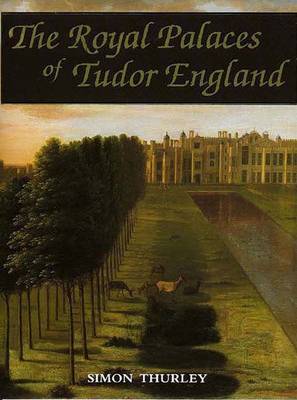The Paul Mellon Centre for Studies in British Art
2 total works
Hampton Court - probably Britain's most important secular historic building complex - is a fascinating collection of buildings, gardens and parks spanning seven hundred years of history. A centre of court life and politics from the late 15th to the middle of the 18th century, a place of architectural innovation, the site of the most ambitious formal gardens ever built in Britain, Hampton Court is still, in many respects, a mystery both to the historian and to the interested visitor. This is a history of Hampton Court and of its gardens and parks, revealing the full complexity of its remarkable building history and illuminating the interplay of court life, politics and architecture. The history of the building is taken right up to the beginning of the 21st century. The 20th-century story of Hampton Court is one of conservation and of changing attitudes towards opening up the complex to the public. It covers everything from the agonizing discussions as to whether to build public lavatories to an account of the private enterprise that caused an octogenarian to make a personal fortune out of opening the maze to the public.
It includes also the story of the terrible fire of 1986 and its aftermath. Social history and architectural history sit side by side in this account. New and important attributions are made to the architects Hugh May, Nicholas Hawksmoor, William Talman, Colen Campbell and Edward Blore, amongst others. Moreover, the palace and its setting are placed in their European context and their long-term architectural significance is gauged. The book is illustrated with original paintings, prints and drawings, and a specially commissioned suite of plans and reconstructions reveal the evolving form of the buildings.
It includes also the story of the terrible fire of 1986 and its aftermath. Social history and architectural history sit side by side in this account. New and important attributions are made to the architects Hugh May, Nicholas Hawksmoor, William Talman, Colen Campbell and Edward Blore, amongst others. Moreover, the palace and its setting are placed in their European context and their long-term architectural significance is gauged. The book is illustrated with original paintings, prints and drawings, and a specially commissioned suite of plans and reconstructions reveal the evolving form of the buildings.
The royal palaces of the Tudor period - Hampton Court Palace, the Tower of London, Greenwich Palace, St James' Palace, Nonesuch, Whitehall and Richmond Palace, amongst others - are the subject of this illustrated book, in which the author examines the way in which Tudor palaces functioned on the inside. Every aspect of palace life - from the deliberations of the Star Chamber to the tennis courts at Whitehall to the problems of providing sanitation for 800 people - is covered in detail, as well as the architectural history of not only the most important palaces, but also a selection of 'lesser' houses. Thurley begins with the castles and palaces of early medieval England and Burgundy, moves on through those built by Henry VII, focusing finally on the many palaces lived in and built by Henry VIII for his itinerant court. The result is both a study of the development of architectural style and form in the critical formative years of early sixteenth-century England and a work of social history which throws completely new light on the way in which Tudor government functioned and on the personality and changing habits of Henry VIII.
The author is now responsible for Hampton Court Palace, Kew Palace and the Tower of London: he recently masterminded the restoration of the Tudor Kitchens and the King's Apartments at Hampton Court.
The author is now responsible for Hampton Court Palace, Kew Palace and the Tower of London: he recently masterminded the restoration of the Tudor Kitchens and the King's Apartments at Hampton Court.

